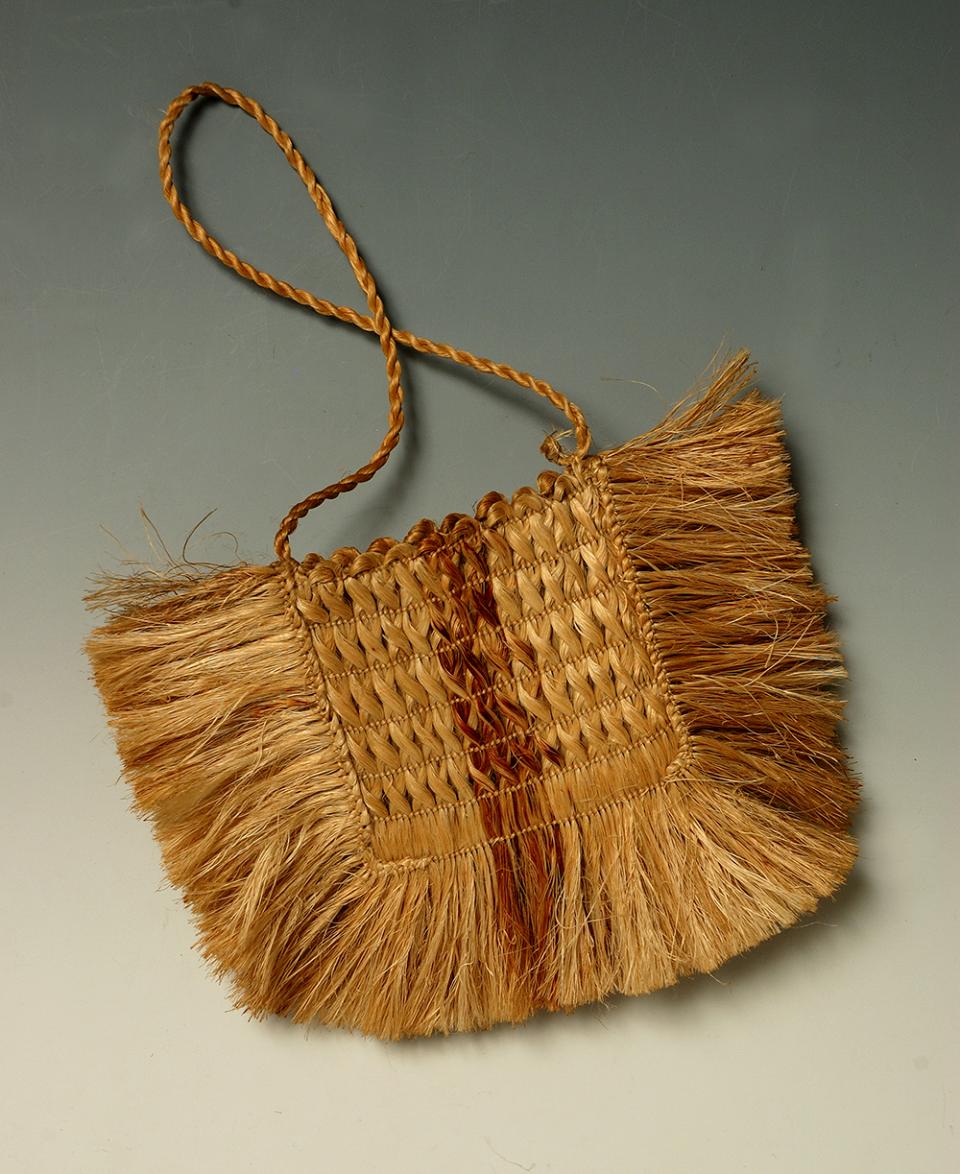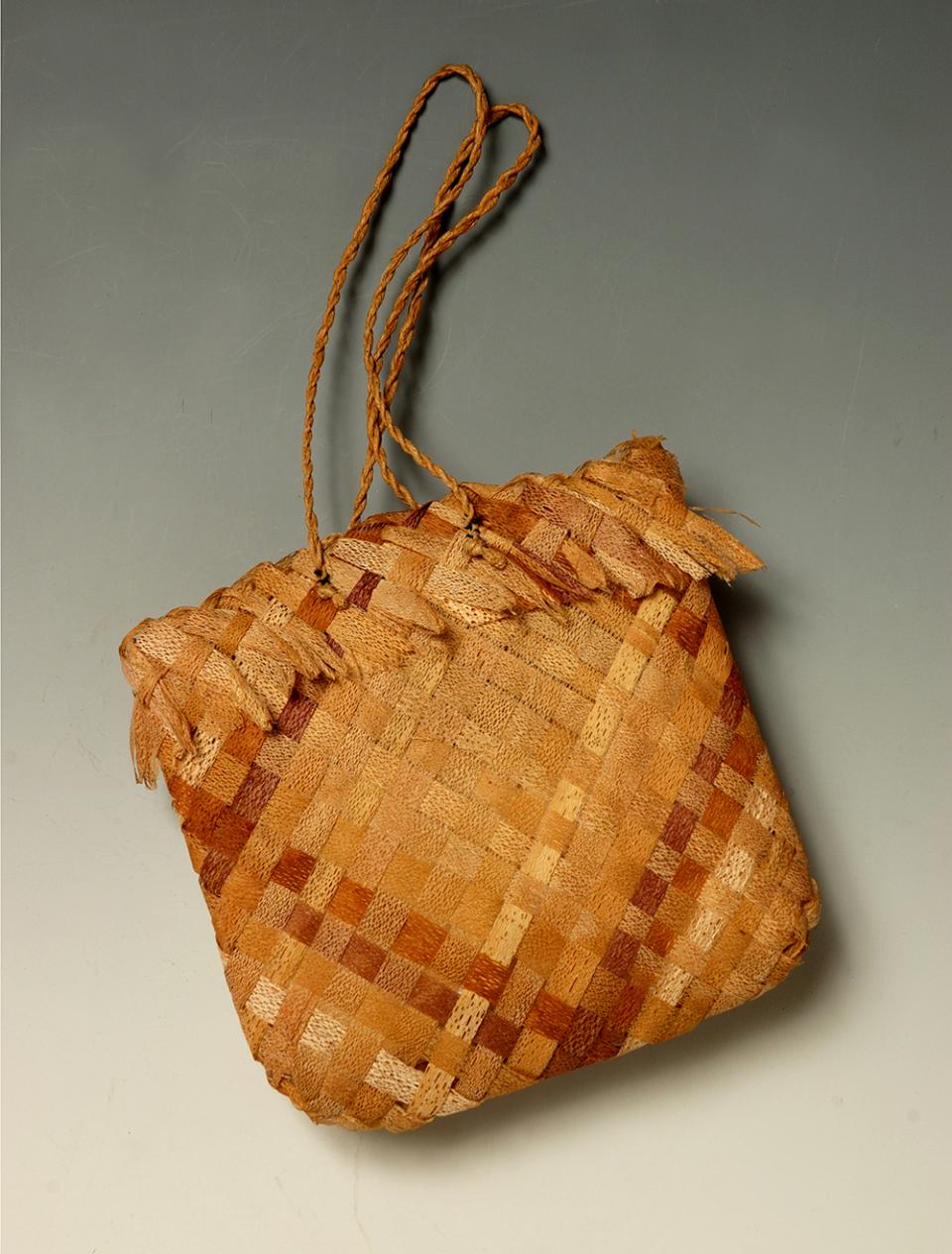These small kete were given to Elizabeth Burden’s mother, housekeeper at Tuhitarata, by Hiko McMaster’s wife Doris. Ronald Hiko McMaster was a descendant of Angus and Mary McMaster, who were among the first European settlers to lease land from Māori in the South Wairarapa, establishing a sheep run at Tuhitarata on the eastern side of Lake Wairarapa.
McMaster and his landlord, Te Hiko Piata Tama-ihīkoia, had a close friendship that lasted until their deaths. He was known to Māori as ‘Hiko’s Pākehā’ when he first arrived, and his son Hugh, the first Pākehā child born in the Wairarapa, was known as ‘Tuhitarata’.
One kete is made of the inner bark of the houhere or lacebark tree, which is used for fine decorative weaving. The other is woven from muka, the processed fibre of harakeke, the New Zealand flax.

